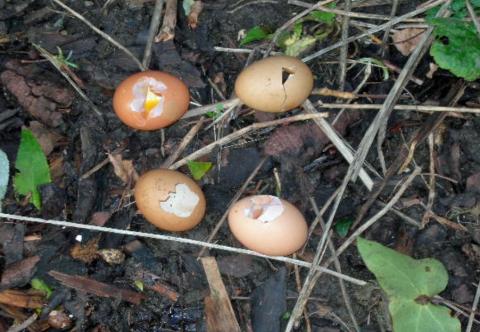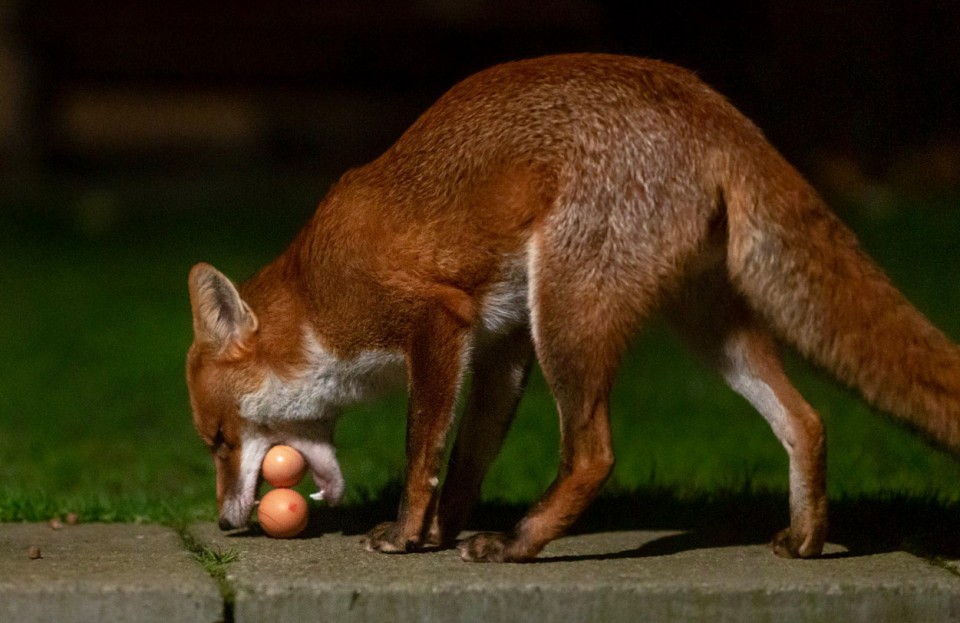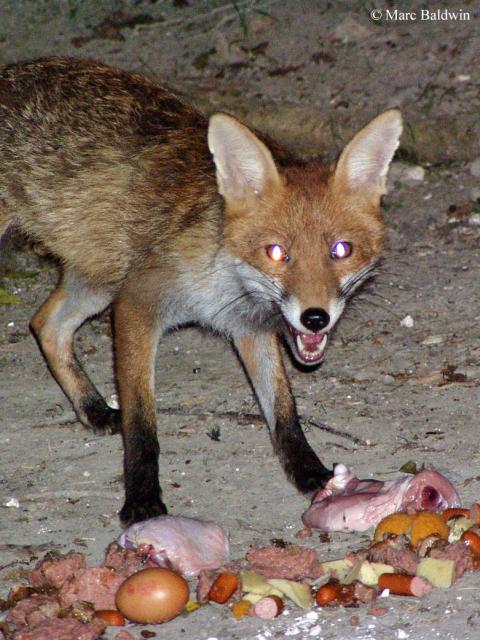Red Fox Diet - How Much Food?

The body is essentially a combustion engine: it burns fuel (food) in the presence of oxygen to produce energy that is used to move us around, keep our hearts beating, lungs breathing, brain thinking, etc. There are lots of different ways to measure this energy, but when we're talking about the metabolism of an animal, we tend to use either calorie or joule. A calorie is essentially a measure of the heat given off by a process, while a joule is a measure of work done (i.e., to move something from A to B). The calories that we're all used to seeing in the nutritional information tables of food packets are actually different to the scientific units of measurement -- one food calorie is actually equal to one thousand "heat" calories and is hence often referred to as a kilocalorie (abbreviated to kcal). A single food calorie is roughly equivalent to four joules.
The day-to-day activities of animals, from replacing dead cells to chasing down a meal, all require energy and each food item provides differing amounts of energy. Scientists can use various factors (such as the size of an animal, the amount of oxygen it's using and its activity state) to calculate how many food calories it is using up and, therefore, how many it requires per day, week, month, etc.
The amount of food required to sustain a fox's metabolism varies according to season and sex. A study of Red foxes in New South Wales (Australia) reported that male body fat reserves peaked at 13% of body mass in June (just prior to breeding) and female body fat peaked at 16% in July (during gestation). The biologists, led by Roy Winstanley at Australia's Vertebrate Pest Research Unit, found that body fat reserves decreased rapidly in both sexes from September through to November, reaching an average of three to four percent by the time the cubs are weaned. The researchers also found low body protein content from August to November (corresponding to a decline in fat reserves), suggesting that the foxes accumulate fat and protein reserves during the non-reproductive seasons and then deplete them during the reproductive period. A subsequent study by the same authors found that, during autumn, dogs required (28%) more energy than vixens, which is presumably a result of the males increasing their activity as the breeding season gets underway.

Working in Bristol between July 2013 and June 2015, Jo Dorning and Stephen Harris and the city's university studied how foxes used the food resources found in gardens at different times of the year and how the animal's sex and status in the group affected this patch use. In a paper to the journal Behavioral Ecology in 2017, the biologists explain that almost 90% of visits to garden feeding stations were made by territory residents and that non-resident visitors tended to be subordinates, suggesting that dominant animals in a territory monopolise the best feeding spots, forcing subordinates to lower quality patches that might, in turn, drive them to trespass in search of food.
Interestingly, the researchers observed that females appeared to use resources more effectively than males, visiting most during the summer months when they had cubs to feed. Males, by contrast, visited the patches at the same rate between spring and autumn, but rarely visited during the winter because they were moving around more looking for mates. Not only did they visit fewer patches during winter, at those they did visit they stayed for shorter periods and frequently did not meet their energy requirements. This ties in with the findings of the AVPRU biologist and earlier work by the Bristol team that found dog foxes lose condition during the winter; having lower fat reserves in late winter and losing weight between winter and spring. Dorning and Harris concluded:
"Females were more efficient foragers than males. Despite visiting the same number of patches on their territory as males, females were more likely to target predictable patches, were more often the first visitor, and [stayed longer] than males in winter and spring."

The influence of season on energy requirements makes it difficult to calculate the precise daily food calories required by a fox, but several studies have provided estimations. Glen Saunders and his colleagues, for example, calculated that the amount of energy required to support a pair of foxes in Bristol was 28 megajoules (MJ, or millions of joules) -- equivalent to about 6,700 kcal -- per week, or 2 MJ (470 kcal) per fox per day. To give this some context, an adult mouse would provide a fox with about 60 kcal, while a large chicken egg would offer about 84 kcal -- thus, a single fox would need about eight mice or six eggs per day. Studies on wild foxes elsewhere have arrived at higher values (30% higher for dog foxes in New South Wales during autumn, for example) and these are probably a result of these animals having larger territories than those in Bristol.
In captivity, energy requirement estimates have also been higher: adult foxes have been found to require about 507 kJ (ca. 121 kcal) per day for every kilogram of bodyweight, while cubs (13 to 14 weeks old) require 934 kJ (ca. 223 kcal). Thus, for your 'average' adult fox, this equates to about 3 MJ (716 kcal) per day, or 21 MJ (5,000 kcal) per week. Perhaps the fact that the foxes were captive signifies rehabilitation, which may explain the increased energy requirements. As we've touched on, we also expect energy demands to vary throughout the year, being higher for lactating females in the late spring and early summer and for males during the winter breeding season, when they're more active. During cold winters, both sexes will require more food just to keep warm.

These figures give us an insight into how urban environments are generally more able to support larger fox groups than rural areas. In their 2000 study, Phil Baker and his co-workers found that the food put out by householders in Bristol represented about 40 MJ (9,554 kcal) per week, per territory; enough to support three foxes. Similarly, Dorning and Harris's survey suggested that householders on their study site in Bristol each put out about 1MJ per day, which is about half an adult fox's daily energy requirement -- so, a fox could get its daily food requirements by visiting just two gardens.
The number of calories or joules needed by a fox is one thing, but how does this translate into the amount of food eaten? Again, this is a deceptively complicated subject because different foods provide vastly different amounts of energy. Nonetheless, it is generally considered that a fox needs to eat roughly 500 grams (just over one pound) of food per day. Indeed, a report by a team at the Central Science Laboratory in York, published during 2002, estimated the daily food intake of Red foxes to be between 520 and 569 grams per day, for an animal weighing 5.7 kg -- equivalent to about 10% of their bodyweight. Similarly, in his book Red Fox: The Catlike Canine, David Henry noted that foxes can survive on only one pound (about 454g) of meat per day, while Torbjorn von Schantz -- working in southern Sweden -- came up with similar values; the average required by adults and subadults (i.e., those between 6 months and a year old) was 520 grams.
von Schantz's study also calculated that, in the week preceding the birth of her cubs, a vixen needed almost 700 grams (1.5 lbs) of food per day, while other researchers have reported that lactating vixens require twice the daily intake of calories of those that are not lactating. von Schantz also found that cubs required 130 grams (4.5 oz.) of food each day during their first four weeks of life, increasing to about 320 grams (11 oz.) by the time they're weaned at around six weeks old, and to 440 grams (just under one pound) at three months old. In their 2003 paper, Harris and Baker calculate that a litter of four cubs will consume just over 570 kg (1,257 lbs) of prey between them in their first year. Foxes have proportionally small stomachs compared with other dogs and the maximum Henry ever observed a fox to consume in a single sitting was about a pound-and-a-half.